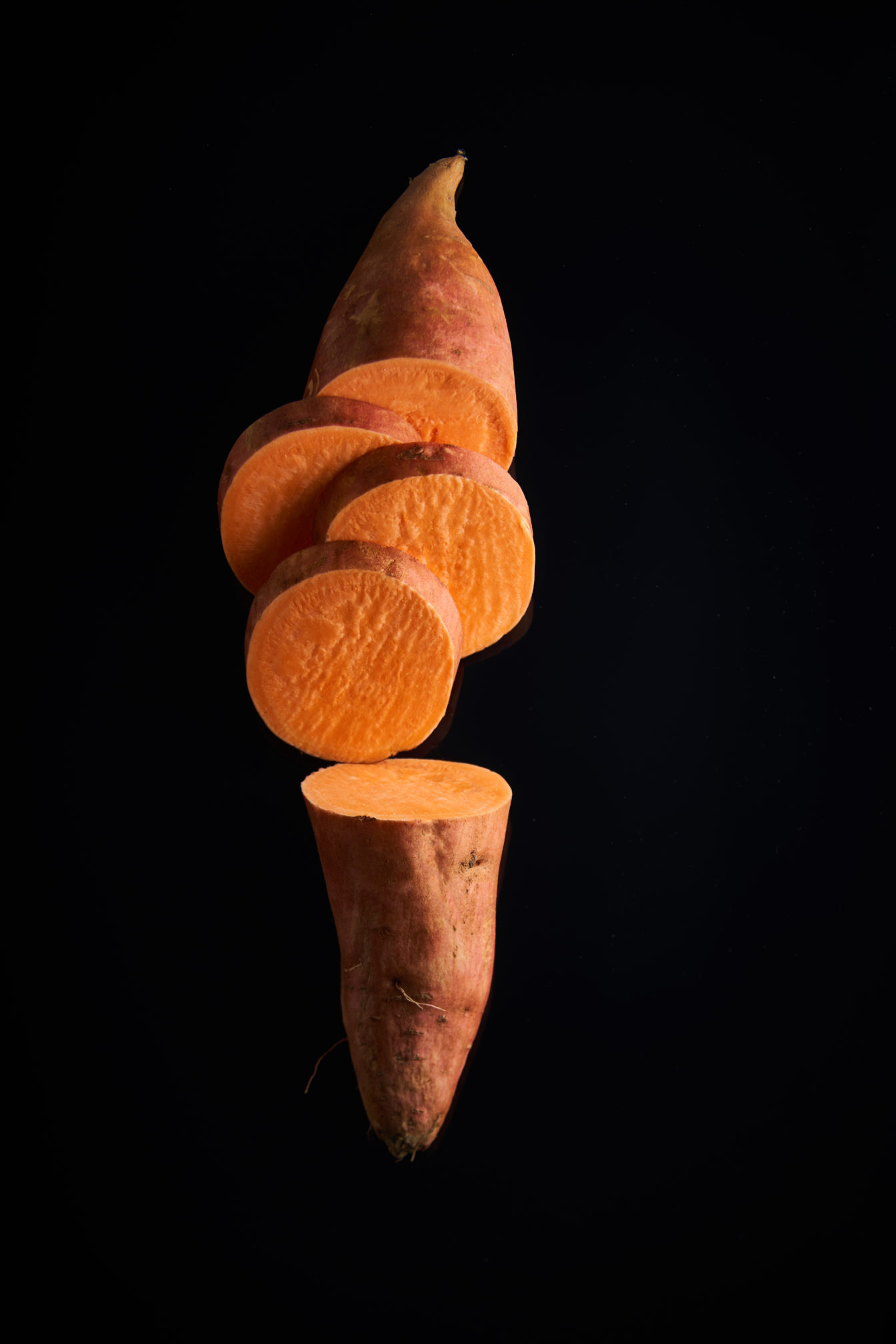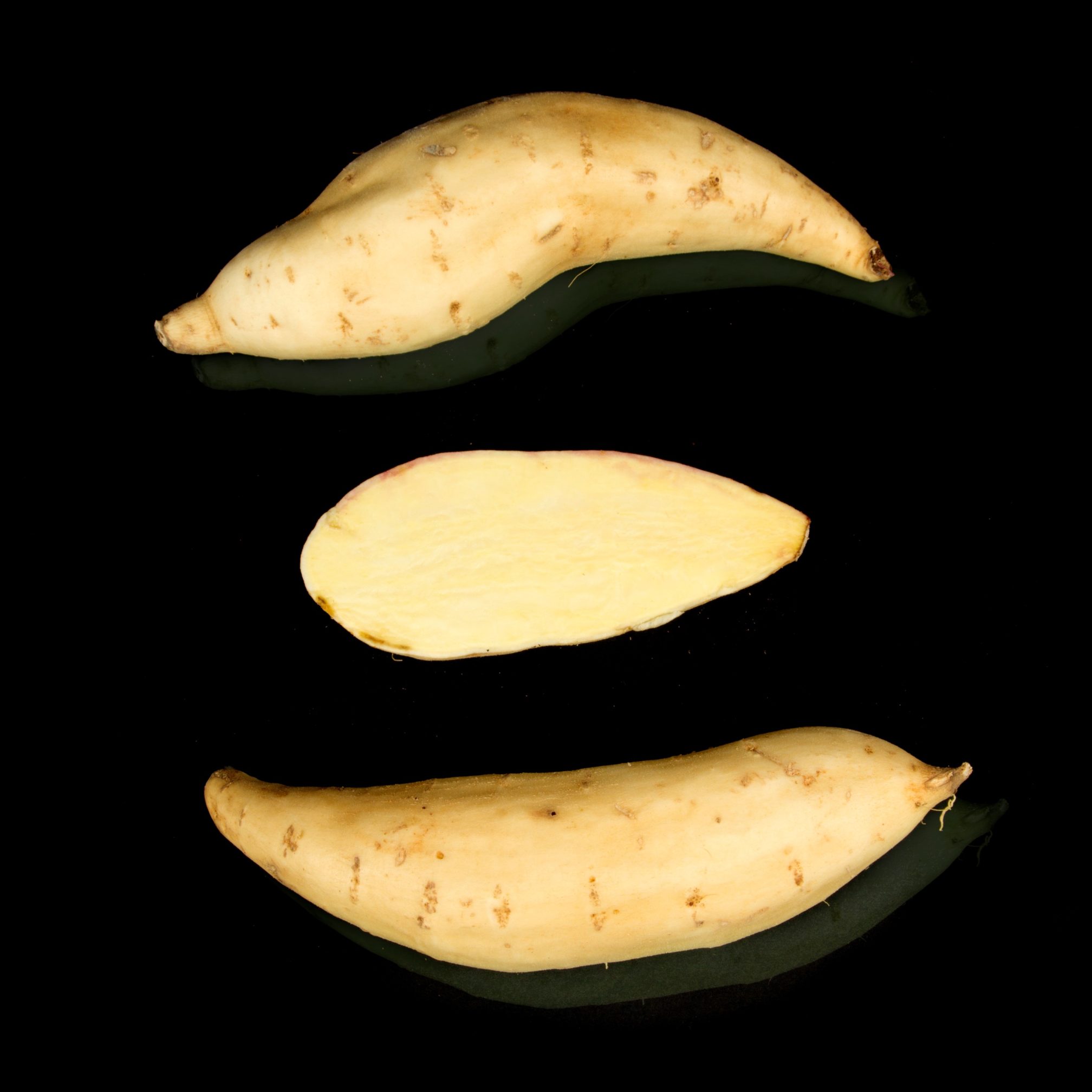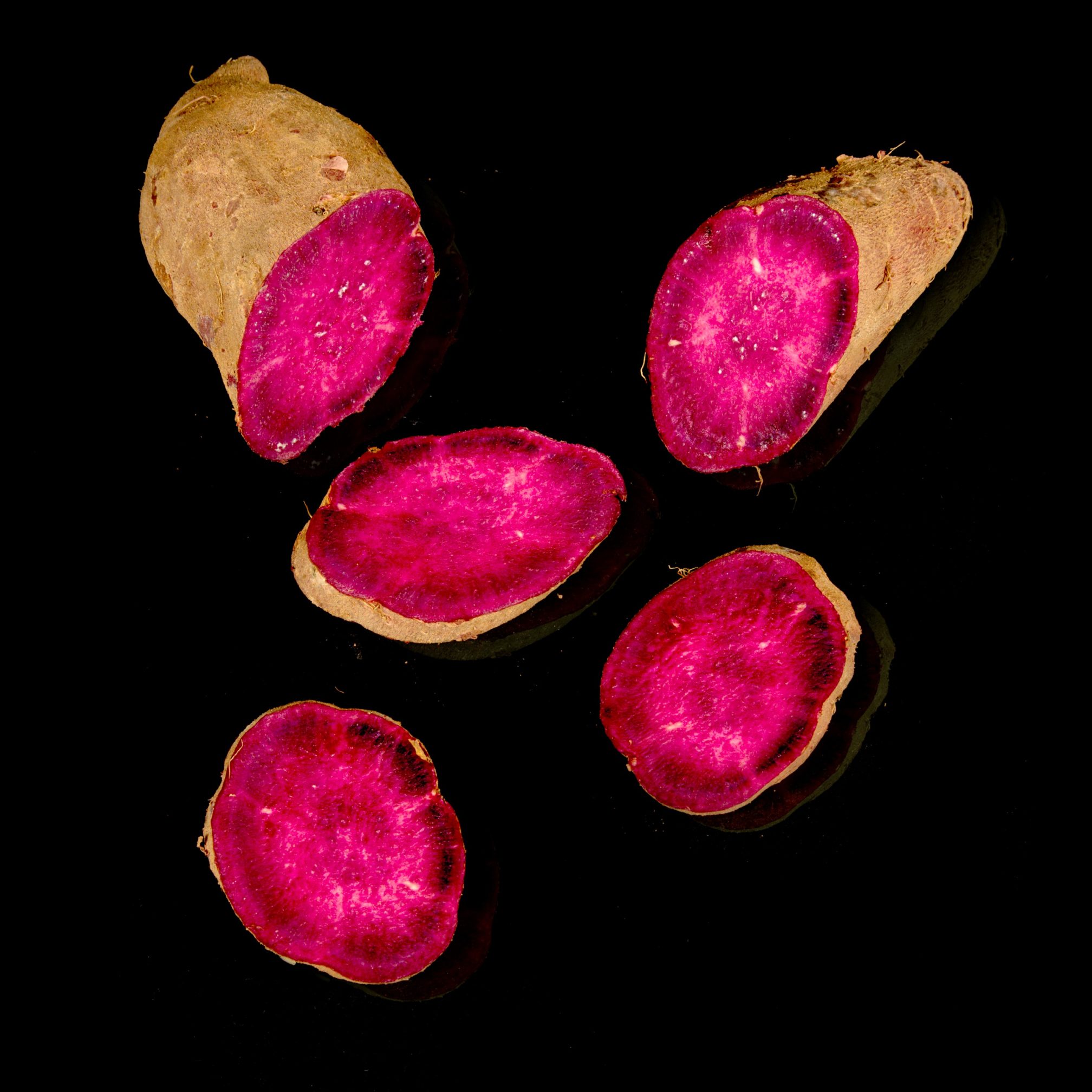Sweet potato
A real delicacy (ideal in pastries)
The sweet potato is an elongated tuber. There are 3 main varieties:
One with orange flesh with a flavour reminiscent of carrots or chestnuts.
One with white flesh and a slightly sweet flavour evoking potatoes.
One with purple flesh whose flavour is similar to orange sweet potato but slightly sweeter.
The sweet potato can be used as a vegetable: ash-roasted, baked, cooked in foil, fried, mashed, in crisps, etc. Or use it to make desserts, especially cakes, because it is sweet.
The sweet potato is very rich in antioxidants: these compounds reduce damage caused in the body by molecules called “free radicals”, which are believed to be involved in the development of cardiovascular diseases, certain cancers and age-related diseases. It is also a good source of vitamins A, C and B, including vitamin B6, which contributes to the production of red blood cells, and minerals such as manganese, copper, potassium, etc.
A real delicacy (ideal in pastries)
The sweet potato is an elongated tuber. There are 3 main varieties:
One with orange flesh with a flavour reminiscent of carrots or chestnuts.
One with white flesh and a slightly sweet flavour evoking potatoes.
One with purple flesh whose flavour is similar to orange sweet potato but slightly sweeter.
The sweet potato can be used as a vegetable: ash-roasted, baked, cooked in foil, fried, mashed, in crisps, etc. Or use it to make desserts, especially cakes, because it is sweet.
The sweet potato is very rich in antioxidants: these compounds reduce damage caused in the body by molecules called “free radicals”, which are believed to be involved in the development of cardiovascular diseases, certain cancers and age-related diseases. It is also a good source of vitamins A, C and B, including vitamin B6, which contributes to the production of red blood cells, and minerals such as manganese, copper, potassium, etc.
A real delicacy (ideal in pastries)
The sweet potato is an elongated tuber. There are 3 main varieties:
One with orange flesh with a flavour reminiscent of carrots or chestnuts.
One with white flesh and a slightly sweet flavour evoking potatoes.
One with purple flesh whose flavour is similar to orange sweet potato but slightly sweeter.
The sweet potato can be used as a vegetable: ash-roasted, baked, cooked in foil, fried, mashed, in crisps, etc. Or use it to make desserts, especially cakes, because it is sweet.
The sweet potato is very rich in antioxidants: these compounds reduce damage caused in the body by molecules called “free radicals”, which are believed to be involved in the development of cardiovascular diseases, certain cancers and age-related diseases. It is also a good source of vitamins A, C and B, including vitamin B6, which contributes to the production of red blood cells, and minerals such as manganese, copper, potassium, etc.


